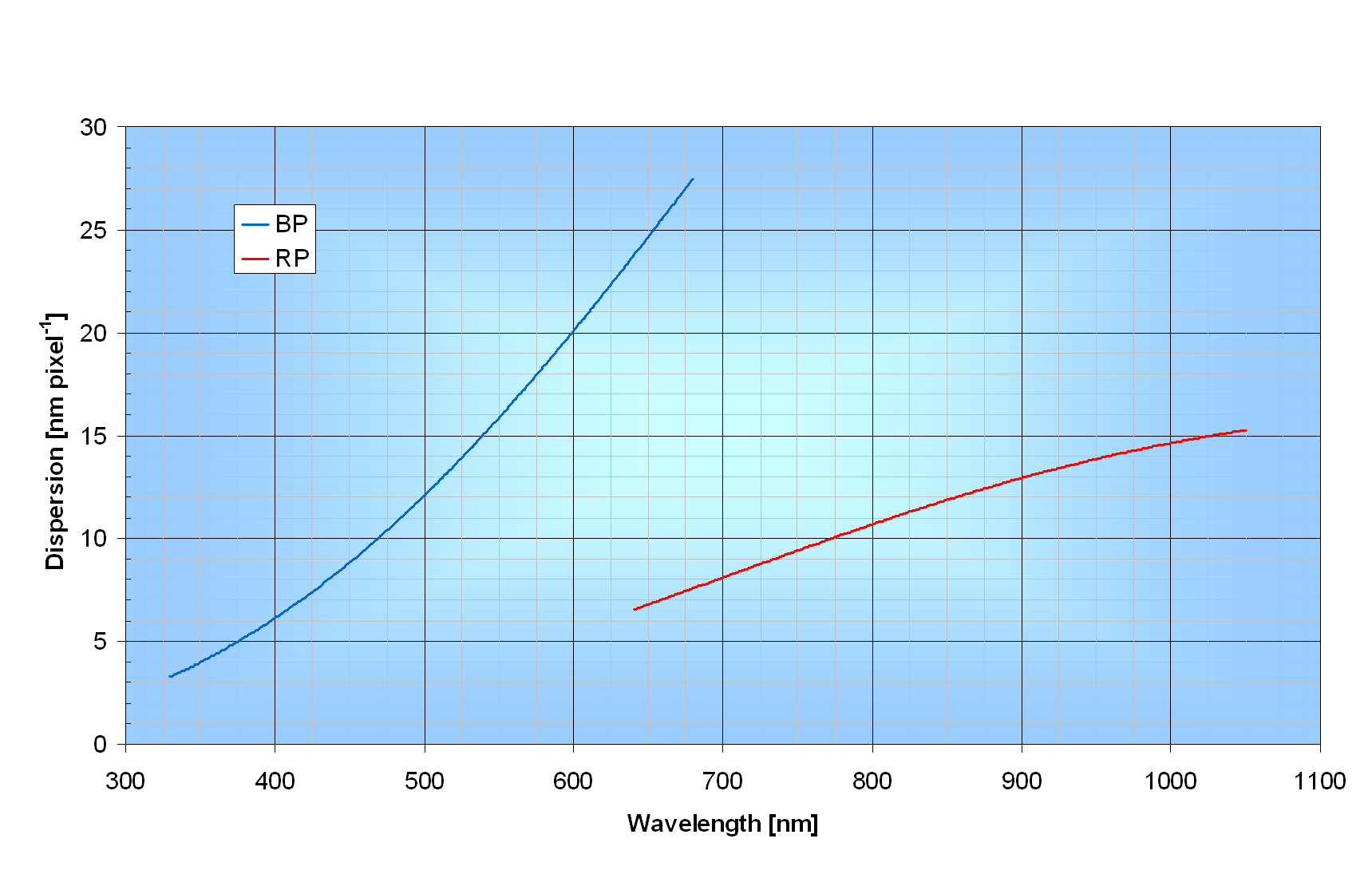Dispersion of the Photometric Instrument - Gaia
DISPERSION of the photometric instrument
The dispersion curves presented here refer to the nominal, pre-launch design. They do neither include the effect of the transmission of the instrument nor the effect of the finite size of the line-spread function. The 76%-energy width of the line-spread function along the dispersion direction varies along the BP spectrum from 1.3 pixels at 330 nm to 1.9 pixels at 680 nm and along the RP spectrum from 3.5 pixels at 640 nm to 4.1 pixels at 1050 nm. The ASCII file of the data is here.
- Removed a total of (1) style text-align:center;








































 Sign in
Sign in
 Science & Technology
Science & Technology

